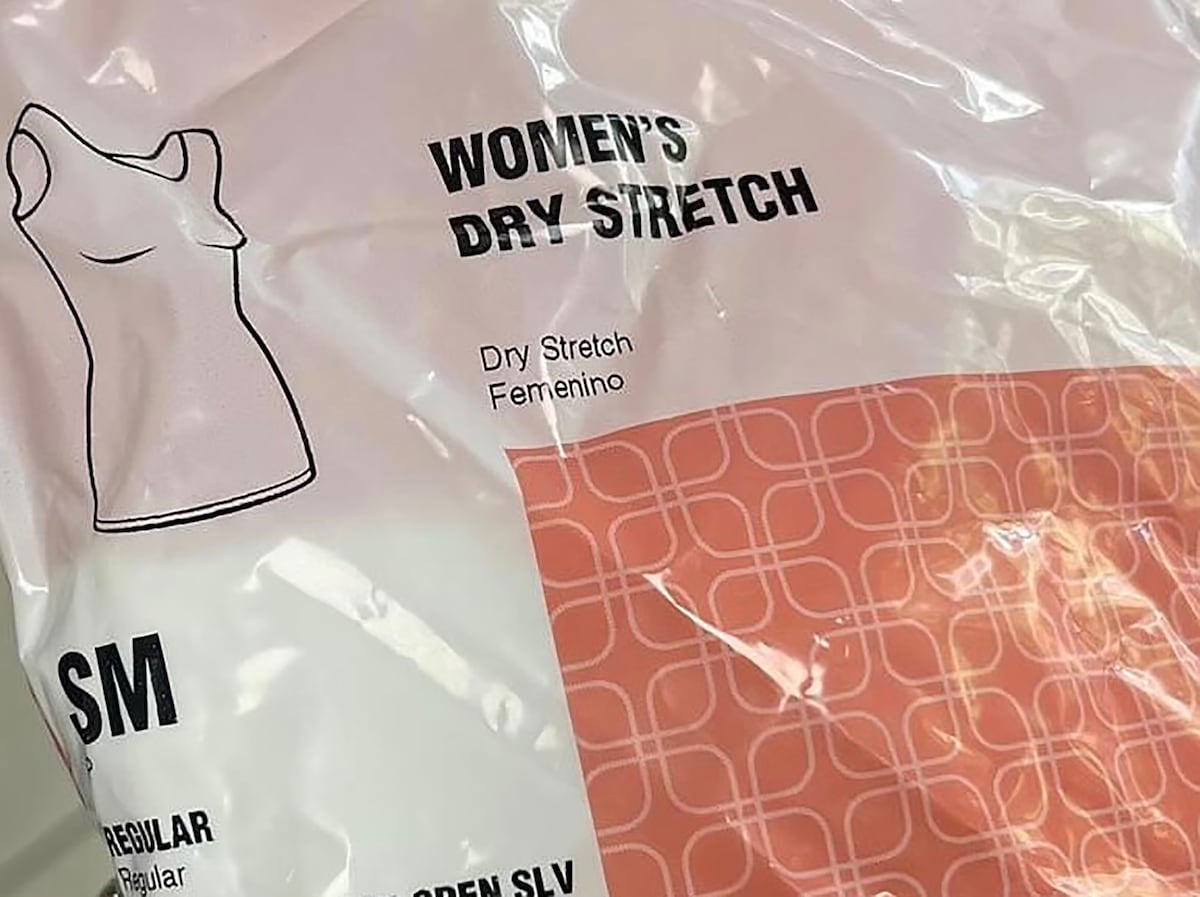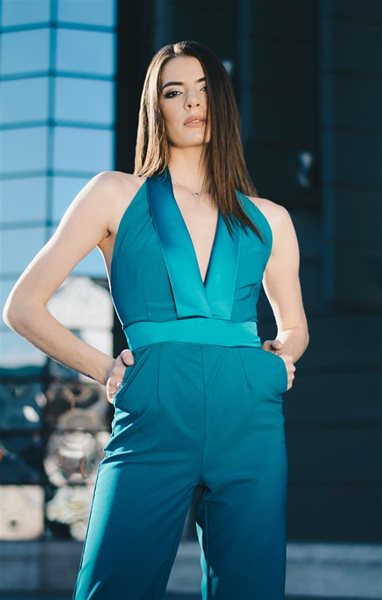The sound you hear is the jubilation of Latter-day Saint women at the news that temple garments soon will be — wait for it — sleeveless.
That is one of the redesign options — labeled “open sleeve” — for garment tops for women and men being tested by The Church of Jesus Christ of Latter-day Saints in hot climates such as Uganda, Kenya, South Africa, the Philippines and some southern U.S. locations.
In this model, temple garments — which faithful members wear underneath normal clothing as a reminder of sacred covenants — look more like tank tops than the current capped sleeve choices.
(The Church of Jesus Christ of Latter-day Saints) This screenshot from the church’s online store shows the “open sleeve” garments now available to women in Uganda.
This new style could make it harder for others to judge who is or is not wearing garments — a real concern for many Latter-day Saint women. (In a 2023 survey, nearly half the active members (45%) said there is a right and wrong way to wear them, and more than half (59%) said they felt judged for how they wear them.)
And there is a light, one-piece “shift” (looks like a slip) option and skirt bottom for women who mostly wear dresses as in Africa.
“Devout Latter-day Saints cherish the privilege of wearing the temple garment,” church spokesperson Doug Andersen explains in a statement issued Thursday morning. “Some of those members live in hot and humid areas. The [governing] First Presidency has authorized changes in the garment to bless those members and others who might benefit from the changes.”
Beyond this, he says, “the church does not comment on temple matters considered to be sacred.” He did not say when the new styles might be more widely available.
Later on Thursday, though, the church posted images of the garments — four new styles for women and two for men — on its online store for U.S. members stating that they would be available in the fourth quarter of 2025.
(The Church of Jesus Christ of Latter-day Saints) This screenshot from the church’s online store for U.S. members shows that the new sleeveless garment tops for women would be available toward the end of next year.
(The Church of Jesus Christ of Latter-day Saints) This screenshot from the church’s online store for U.S. members shows that the new sleeveless garment tops for men would be available toward the end of next year.
Despite the wait, members across the globe greeted the news with excitement.
“I am thrilled to hear about the garment redesign,” says Rachel Gerber, an Instagrammer with LDS Changemakers, which promotes gender equality in the church. It is, she adds, like an answer to prayers.
“Thousands of women have complained about garment styles to the church,” Gerber says. “Many felt like their complaints fell on deaf ears. They were viewed as ‘less righteous’ because garments did not work for them.”
It takes faith “to confront a church policy that negatively impacts you,” the California woman says. “I have faith that God hears my complaints and mourns with me.”
The new style “will not work for everyone,” Gerber concedes. “I hope members will recognize that this change is from Latter-day Saints asking for more.”
[Read more reactions from Latter-day Saints about the change in temple garments.]
Modesty concerns arose
Colorado Latter-day Saint Afton Southam Parker was one who spoke up.
While living in Thailand with her husband and five children, Parker experienced firsthand what humidity and heat did to Latter-day Saint women who faithfully wore their temple garments.
It was like having “a damp crotch” all the time, causing infections, discomfort and distress especially during menstruation and pregnancy, she says. “It was so hard. There was nowhere to go for women to get answers about something that was required in order to be temple worthy.”
So after returning to the U.S, Parker contacted church headquarters in Salt Lake City and three years ago got an interview with the head of a garment design committee (a man she says was in his 60s), who assured her that there were women on it.
She offered a lengthy PowerPoint presentation, including global challenges Latter-day Saint women face with the then-current design and fabrics.
“He seemed mostly concerned that women be covered and modest,” she recalls him saying, to which she replied, “Why not make them easier for all body types and let women choose?”
The new version “feels like some of his desires — to keep women from really wearing true sleeveless clothes — is affecting the design,” Parker says. “Another inch off and it would really transform them to be more wearable with more clothes.”
It has never made sense to her that “the shoulders or other parts of the garment were part of the design,” she says, “when they weren’t related to the [symbolic] markings.”
While this “feels like a win,” Parker says, “much more needs to be done.”
For her part, Latter-day Saint podcaster Cynthia Winward is pleased to know that “leaders are listening” and believes the dress option “will be so much better for women’s health.”
She wonders, though, why there can’t just be a “spaghetti strap top,” says Winward, co-host of “At Last She Said It.” “It still seems like they’re trying to control women’s clothing choices.”
A push for more stringent rules
(The Church of Jesus Christ of Latter-day Saints) Devout Latter-day Saints buy their temple garments online and at distribution centers like this.
Earlier this year, one of the faith’s high-level male leaders condemned what he saw as “causal,” even “cavalier” wearing of the religious underclothing by devout members.
In a speech in Northern California, general authority Seventy Kevin Hamilton criticized women who wear garments only on Sunday and to the temple, and the rest of the week can be seen in “yoga pants.”
For years, the standard instruction had essentially been for women and men to wear them “day and night.”
According to a recent survey, however, some women were donning them when and where they want — and they didn’t, it seemed, view that as disobedience or inappropriate. At the same, it was getting tougher to find clothing, especially for women, that completely covered garments.
Days after the church’s General Conference in April, the Utah-based faith’s First Presidency sent a letter to all local and regional male leaders that reiterated the importance of wearing the sacred underwear as a “reminder of [devout members’] covenant relationship with [Jesus Christ] and Heavenly Father.”
The letter also explained that one of the temple recommend questions — used to determine “worthiness” to enter the holy edifices — had been revised and another one added.
The changes were subtle, rather than broad, but there was a clear message: Garments are to be worn “as instructed in the temple” and not left to members’ individual inspiration and interpretation.
An evolving style
This is hardly the first time the church has altered its sacred clothing.
The faith surveys Latter-day Saints from time to time about garments, so fabrics and designs have evolved through the years. And they may change yet again.
After all, the First Presidency views “the symbolism of the garment” as “more important than the style,” according to “Saints, Volume 3,” part of the church’s official history.
“The existing garment pattern, which stretched to the ankles and wrists and had string ties and a collar, was ill-suited for the types of clothing worn in the 1920s,” the book explains. So top church leaders “instructed that a shortened and simplified garment be made available.”
The new dress option “is blowing my mind. It looks so, so wearable,” says Laura Brignone, a Latter-day Saint research analyst at Sacramento State University who has assessed current garment cuts and how they work — or don’t work — with popular fashion. “The experience of always wearing shorts under dresses is such a major part of the clothing experience for most endowed women — once a week on Sundays, at least — that I can imagine this having a huge impact on endowed women’s relationship with their clothing.”
Looking forward, she hopes to see “more thoughtful, functional designs like this,” Brignone writes in an email. “Wouldn’t it be great if my daughter or nieces could one day choose the garment slip most suited to her wedding dress? Or go to a professional conference with a shell garment top that neither puts her at risk of overheating (with a jacket) or immodest exposure (without one)? Frankly, these redesigns get us much closer to that future than I thought would happen in my lifetime.”
From now on, Gerber of LDS Changemakers hopes that when leaders inevitably encounter someone with a complaint about garments, “they recognize that person’s faith.”
In discussions with women about these holy coverings, she says, “the overwhelming theme has been that they feel like they are annoying their leaders when they bring up a complaint.”
They shouldn’t, Gerber says. These are acts of courage and a desire to maintain their religious commitments but in a physically realistic way.
Amy Watkins Jensen, who directs the Instagram site Women on the Stand, appreciates all efforts by the church “to understand and address the specific needs of women.”
This move reaffirms for Jensen that “good information” can lead, she says, to “good inspiration.”
— Tribune Senior Managing Editor David Noyce contributed to this story.
Editor’s note • This story is available to Salt Lake Tribune subscribers only. Thank you for supporting local journalism.












